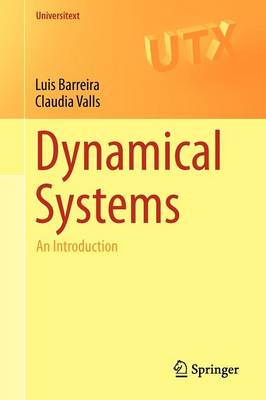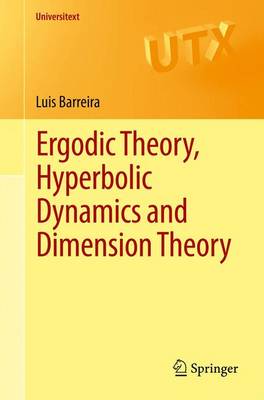Universitext
2 total works
The theory of dynamical systems is a broad and active research subject with connections to most parts of mathematics. Dynamical Systems: An Introduction undertakes the difficult task to provide a self-contained and compact introduction.
Topics covered include topological, low-dimensional, hyperbolic and symbolic dynamics, as well as a brief introduction to ergodic theory. In particular, the authors consider topological recurrence, topological entropy, homeomorphisms and diffeomorphisms of the circle, Sharkovski's ordering, the Poincare-Bendixson theory, and the construction of stable manifolds, as well as an introduction to geodesic flows and the study of hyperbolicity (the latter is often absent in a first introduction). Moreover, the authors introduce the basics of symbolic dynamics, the construction of symbolic codings, invariant measures, Poincare's recurrence theorem and Birkhoff's ergodic theorem.
The exposition is mathematically rigorous, concise and direct: all statements (except for some results from other areas) are proven. At the same time, the text illustrates the theory with many examples and 140 exercises of variable levels of difficulty. The only prerequisites are a background in linear algebra, analysis and elementary topology.
This is a textbook primarily designed for a one-semester or two-semesters course at the advanced undergraduate or beginning graduate levels. It can also be used for self-study and as a starting point for more advanced topics.
Over the last two decades, the dimension theory of dynamical systems has progressively developed into an independent and extremely active field of research. The main aim of this volume is to offer a unified, self-contained introduction to the interplay of these three main areas of research: ergodic theory, hyperbolic dynamics, and dimension theory. It starts with the basic notions of the first two topics and ends with a sufficiently high-level introduction to the third. Furthermore, it includes an introduction to the thermodynamic formalism, which is an important tool in dimension theory.
The volume is primarily intended for graduate students interested in dynamical systems, as well as researchers in other areas who wish to learn about ergodic theory, thermodynamic formalism, or dimension theory of hyperbolic dynamics at an intermediate level in a sufficiently detailed manner. In particular, it can be used as a basis for graduate courses on any of these three subjects. The text can also be used for self-study: it is self-contained, and with the exception of some well-known basic facts from other areas, all statements include detailed proofs.

